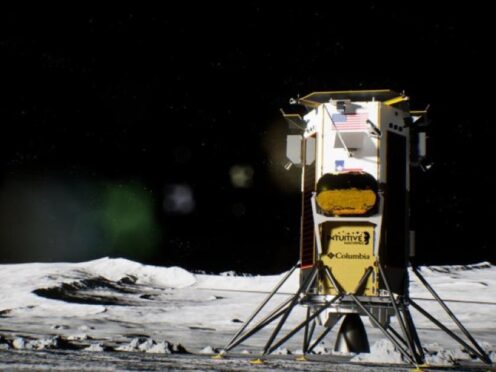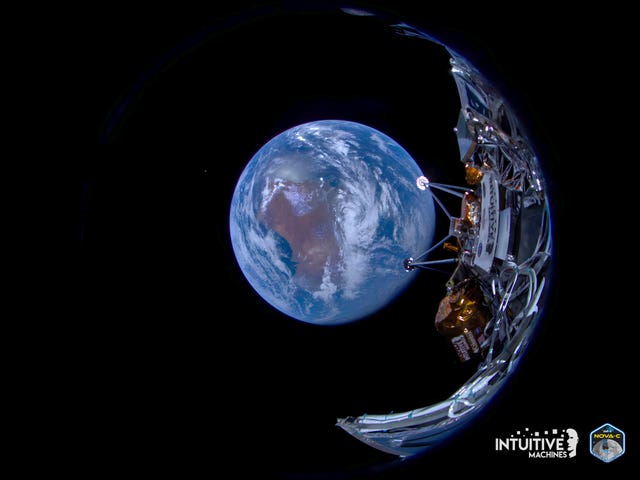
A lunar lander which became the first privately owned spacecraft to land on the Moon is “stable” and is likely lying on its side with its head resting against a rock.
Intuitive Machines’ Nova-C Odysseus lander, a private spacecraft, touched down in the Moon’s south pole region at 11.23pm UK time on Thursday.
Steve Altemus, the chief executive and co-founder of Intuitive Machines, told a press conference the lander may have “tipped” but it is in communication with operators.
It is possible the robot may have caught a foot on the surface and fell because it still had some lateral motion at the moment of landing.
Mr Altemus said: “It’s pretty incredible, it was quite a spicy seven-day mission to get to the Moon.
“So just to begin with, the vehicle is stable, near or at our intended landing site. We do have communications with the lander.”
He said they were using the Goonhilly Earth Station satellite dish in Cornwall to download data and he hoped to have surface photos soon.
He added the lander was in a good position, but its exact location in the South Pole region had not been pinpointed.
Lunar Surface Day One Update (23FEB2024 0818 CST)Odysseus is alive and well. Flight controllers are communicating and commanding the vehicle to download science data. The lander has good telemetry and solar charging.
We continue to learn more about the vehicle’s specific…
— Intuitive Machines (@Int_Machines) February 23, 2024
“We have the sun impinging on the solar arrays and charging our batteries,” he said. “We are providing power to the spacecraft and we’re at 100% state of charge. That’s fantastic.”
The touchdown of the Nova-C Odysseus lander was the first US landing on the Moon since the final mission of the Apollo programme, Apollo 17, more than 50 years ago.
The mission will help advance landing technology for future missions and also help establish how landing can disturb the lunar surface.
Mr Altemus said: “If you think back from Apollo days, there wasn’t one mission that went absolutely perfectly so you have to be adaptable.

“You have to be innovative and you have to persevere, and we persevered. Right up until the last moments to get this soft touchdown like we wanted to.”
Nasa is hoping to return astronauts to the surface of the Moon in September 2026 after announcing earlier this year that timetables had been delayed by about a year as safety was a top priority.
The Artemis programme will see the construction of the Lunar Gateway – a space station where astronauts will be able to live and work.
The successful mission, IM-1, comes a month after another US spacecraft, Peregrine, failed to touch down on the lunar surface after a fuel leak.
The failure of Peregrine, operated by US company Astrobotic, marked the third time a private company had been unable to achieve a soft landing on the lunar surface.

Enjoy the convenience of having The Sunday Post delivered as a digital ePaper straight to your smartphone, tablet or computer.
Subscribe for only £5.49 a month and enjoy all the benefits of the printed paper as a digital replica.
Subscribe